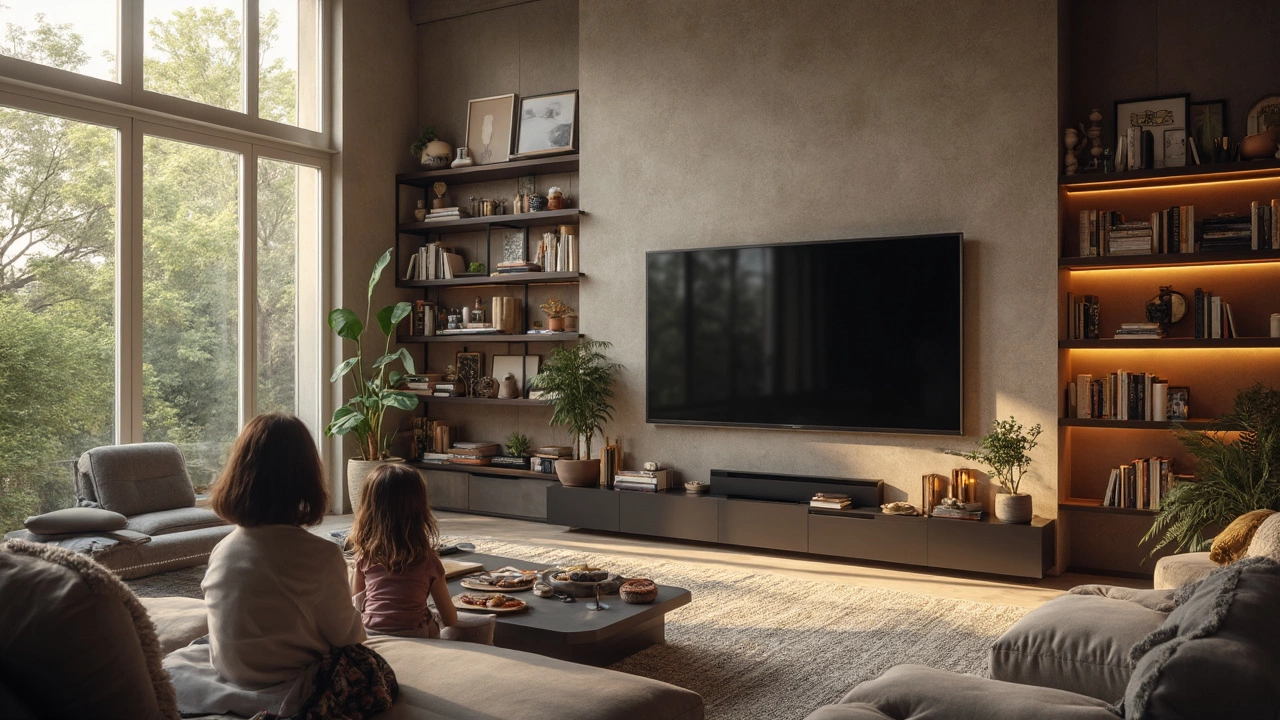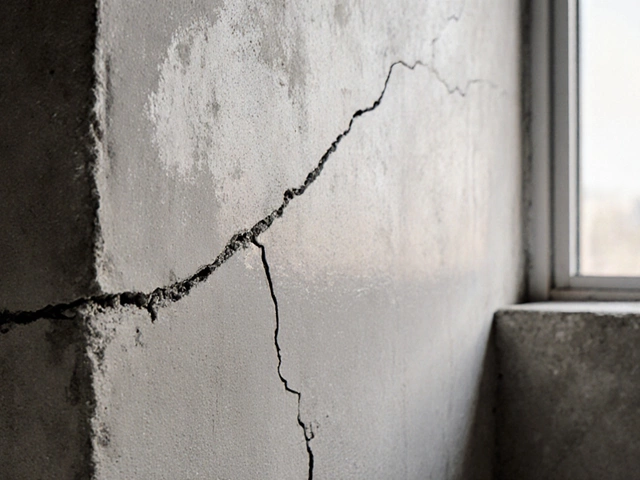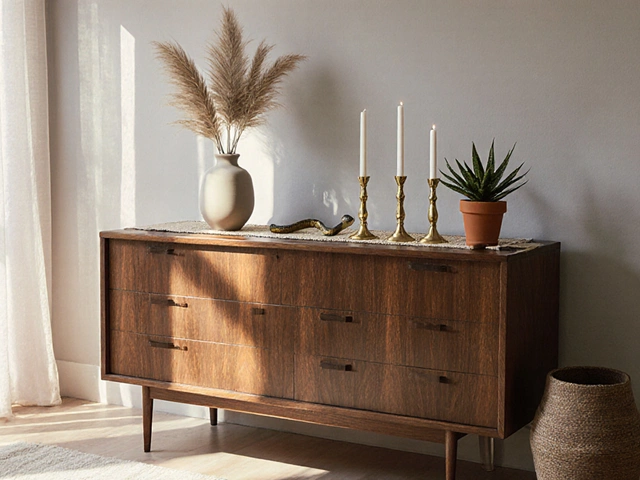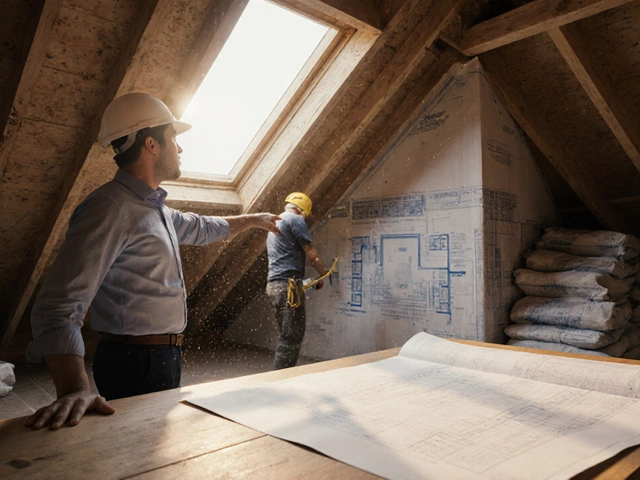Ever pulled a new flat-screen out of the box, checked out those skinny little legs, and thought, “No way is that holding up my TV—especially with kids or pets around”? You’re definitely not the only one. Those basic legs are usually designed for warehouse shelves, not the chaos of an actual living room.
Before you start stressing about accidents or your TV wobbling every time someone walks by, know that there are way better ways to set things up. Ditching the factory legs opens up a ton of options for style, safety, and saving space. Whether you want your TV floating on the wall, sitting on a stylish stand, or even part of a custom shelving unit, switching things up can completely change the vibe of your room—and make your setup feel way more solid.
- Why Replace TV Legs?
- Wall Mounts: Sleek and Safe
- TV Stands: Classic and Versatile
- Floating Shelves and Units
- Specialty Furniture and DIY Options
- Picking the Right Solution for Your Space
Why Replace TV Legs?
If you’ve ever had a TV with standard legs, you know they aren’t exactly built for real life. TV makers use basic legs so they can fit their screens in skinny boxes and keep shipping costs down. For actual use at home, though, they’ve got a bunch of problems that make folks look for alternatives.
One big issue is stability. Those narrow factory legs barely match the size of the TV. Bump the stand or lean a little on your entertainment center, and the whole thing can rock or tip. A recent home safety report found that nearly 40% of tip-over accidents involving TVs happened with TVs on factory legs. With heavy screens, especially if you’ve got young kids or pets running around, that’s not a risk worth taking.
Check out how common TV setups stack up in terms of stability:
| Setup Type | Stability (1-5) | Common Issues |
|---|---|---|
| Factory TV Legs | 2 | Wobbly, easy to tip |
| Wall Mounts | 5 | Very secure, child safe |
| Sturdy TV Stands | 4 | Stable but needs level floor |
Another reason people ditch the default legs? Style. Those plastic feet just don’t do your living room any favors. They often clash with your furniture or make your sleek new TV look cheap. Plus, default legs usually set your TV super low, which isn’t great for your neck or for viewing comfort.
There’s also a space problem. TV legs usually need a wider surface, which can really limit where you can set your screen. If you’re living in a small apartment or you’re trying to squeeze a bigger TV into your current setup, you might find the TV legs alternatives open up way more options for fitting that screen exactly where you want it—no more having to buy a huge stand just to match those feet.
- Better safety for kids and pets
- A cleaner, more modern look
- Extra shelf or storage space below the TV
- The right viewing height for your couch
So, swapping out standard legs isn’t just about looks—it’s a real upgrade for safety, convenience, and how your room feels.
Wall Mounts: Sleek and Safe
Wall mounts are the go-to answer if you want your living room to feel bigger, less cluttered, and way safer—especially if you’ve got kids or pets. Screwing your TV straight onto the wall isn’t just about looking cool; it actually keeps the screen out of arm’s (and paw’s) reach and frees up floor space.
The reality? A huge chunk of new TV owners are going for mounts these days. According to a 2023 report from Statista, over 60% of U.S. flat-screen buyers say a wall mount is their preferred setup. And here’s why:
- TV legs alternatives like wall brackets mean your TV isn’t going anywhere, even if you bump into the stand or the dog gets hyper.
- You can easily adjust the height, tilt, or even swivel your TV depending on where you want to park yourself on the couch.
- No risk of accidental knock-overs, plus you get way more freedom for game consoles or a soundbar underneath.
But not all mounts are the same. Here’s a simple breakdown:
| Type | Main Feature | Good For |
|---|---|---|
| Fixed | Keeps TV flat and close to the wall | Minimalist looks, small rooms |
| Tilt | Leans up or down for better viewing | Above the fireplace, glare reduction |
| Full Motion | Extends, swivels, and tilts | Open layouts, corner placement |
If you’re handy, you can get a wall mount kit for under $50 and install it yourself in under an hour with just a drill and a stud finder. Always aim for studs—not just drywall—since TVs aren’t exactly light (even smaller ones weigh 20+ pounds). And remember, every TV and mount has a specific VESA pattern (those four screws in the back)—match those up to avoid any nasty surprises mid-install.
One last thing—hiding wires. Most people snip a cable channel to the wall or drill a hole for a clean look. Makes a huge difference and keeps the whole setup looking pro.
TV Stands: Classic and Versatile
If you don’t want to mount your TV on the wall—or just need more flexibility—TV stands still win big for being easy, safe, and way more stylish than any plastic TV legs out there. Set-up is usually a breeze, and you get a bunch of extra storage for things like gaming consoles, cable boxes, and even all those tangled cords you’d rather hide.
Stands have leveled up over the years. You’ll find everything from simple wooden benches to big entertainment centers that basically act like custom-built furniture. Some even come with adjustable shelves and cable management so your setup doesn’t turn into a mess. When making a pick, pay close attention to the size and weight rating. Nearly every stand in stores has a clear max TV size it can handle—don’t ignore it just because you like how it looks.
Here’s a quick cheat sheet that shows what people look for and what TVs actually need:
| Stand Size | Fits TV Size | Weight Limit | Most Common Material |
|---|---|---|---|
| Small (40-50 in) | Up to 43” | 40-80 lbs | MDF, glass |
| Medium (50-60 in) | Up to 55” | 60-110 lbs | Wood, metal |
| Large (60+ in) | Up to 75”+ | 120-200 lbs | Engineered wood, hardwood |
Also, don’t sleep on corner TV stands—they save space and work great if you can’t do a wall mount. If you keep rearranging your living room (or you somehow move every year like me), a TV stand is way less of a headache. You just unplug, pick up, and go—no patching up drywall from the old wall mount holes.
Looking for a statement piece? Some entertainment centers let you build a whole media zone, with integrated LED lighting and tons of shelf space. Still want flexibility? Go for stands with wheels or open back panels for easy cable reach. Among all TV stand ideas, the best move is picking one that actually fits your TV, your space, and how you live. Trust me, a TV stand that checks these boxes instantly makes movie nights and gaming way smoother.

Floating Shelves and Units
If you’re tired of clunky furniture in your living room, floating shelves and wall units are a slick way to hold your TV and save space. Forget the old entertainment centers that dominate half your wall—floating options free up your floor and make cleaning way less of a pain.
Real talk: floating shelves aren’t just about looks. When anchored correctly into wall studs, they can handle the weight of most TVs up to 70 inches. Brands like IKEA and Besta have built-in cable management, so you’re not stuck staring at a jungle of wires. According to a report from Consumer Reports, "Wall-mounted units, when installed with the correct mounting hardware, can support more weight than most standalone TV legs."
You don’t even need to spend a fortune. Lots of people hack together their own setups with simple shelves from hardware stores, some heavy-duty brackets, and a little elbow grease. Here’s what you should keep in mind before going this route:
- TV legs alternatives like floating shelves need sturdy mounting—always hit at least two wall studs, not just drywall.
- Measure your TV’s width and make sure the shelf sticks out far enough to hold the whole base.
- Add a shelf below or next to the TV for soundbars, consoles, or streaming boxes so they’re not hanging off the side.
- Look for units with cable holes or add your own with a drill to keep cables tidy.
Bonus tip: floating entertainment units (the longer, furniture-style ones that mount to your wall) give you all the style of a fancy credenza but stay off the floor—perfect for robot vacuums and messy pets. If you live in a small apartment or just want an ultra-modern look, this route makes a huge difference.
Specialty Furniture and DIY Options
If you want something totally different from what everyone else has, specialty furniture and DIY projects open up a world of choices. You’re not stuck using the factory TV legs, and there’s a whole market of solutions built for better looks, stability, and storage.
Let’s talk about some specific ideas that are catching on. Media consoles with built-in TV mounts let you ditch both the legs and the wall drill. These cabinets come with a steel frame inside that supports the TV straight from the back—no more worrying if that drywall will hold. IKEA’s BESTÅ series is crazy popular for this; people even hack them to include soundbars and mood lighting. Some newer rolling TV caddies—even those with lockable wheels—make it easy to move your TV from room to room, actually perfect for parties or large open spaces.
For something really unique, you’ll find lift cabinets that hide your TV out of sight at the push of a button. Numbers from industry tracker Grand View Research show that lift mechanisms are growing by about 8% a year, and they’re way safer for homes with little kids or curious pets. Those lift cabinets can even be put at the foot of your bed for next-level movie nights.
If you’re up for a little DIY, here are a few practical projects:
- Repurpose a sturdy dresser by mounting the TV on a VESA plate bolted through the top drawer cover. Instant TV stand with hidden storage for remotes and game controllers.
- Build a custom plywood wall panel and attach a mount—hide the cables right behind for a super clean look.
- Reuse old pallets to create a rustic TV shelf with extra spots for speakers or plants. Sand it down, stain to match your room, then install brackets.
Here’s how some of these options compare on key features:
| Option | Stability | Storage | Mobility | Cost Range ($) |
|---|---|---|---|---|
| Media Console w/ Mount | High | Good | Low | 150-800 |
| Lift Cabinet | Very High | Excellent | Low | 500-2500 |
| Rolling TV Caddy | Medium | Minimal | High | 100-400 |
| DIY Panel or Shelf | Depends | Customizable | Low | 50-300 |
The best part with these TV legs alternatives? You get to tailor your setup to your space and your own style. Whether you want to show off, hide wires, or just stop worrying about kids knocking over the TV, these options have you covered.
Picking the Right Solution for Your Space
If you’ve made it this far, you’re probably ready to swap out those TV legs—but there’s not a one-size-fits-all answer. The right setup depends on your room, lifestyle, and how you actually use your TV. Here’s what you need to think about before making your move.
Start by checking your wall space. If you’ve got a clean stretch of wall with studs (that’s just a fancy word for the wood vertical beams behind the drywall), wall mounting could be your best friend. Most U.S. homes have studs spaced 16 inches apart, which matches up well with most wall mount brackets. The bonus: wall mounts clear up furniture space and keep cords tucked away, especially if you go with in-wall cable kits.
But what if your wall can’t take the weight, or you rent and can’t drill holes? A solid TV stand solves the problem. Look for a stand that's at least as wide as your TV for better balance. Most experts say the stand should sit 18-24 inches below your eye level when you’re seated, so you’re not craning your neck. And don’t forget storage: built-in shelves score big for game consoles, soundbars, and those mystery cords you keep finding.
- Tight on space? A floating shelf or slim entertainment unit frees up floor space and can hide your power strip behind.
- Got a massive living room? A beefy media console or custom cabinetry gives you space for speakers, extra screens, or your growing vinyl collection.
- Small kids or pets? Choose furniture with rounded corners or tip-resistant mounts. The Consumer Product Safety Commission reported over 22,000 injuries from falling TVs in the U.S. last year alone—no joke.
Here’s a quick cheat sheet to help you line things up:
| Solution | Best For | Estimated Cost |
|---|---|---|
| Wall Mount | Modern look, saves floor space | $20-$150 |
| Classic TV Stand | Flexible, no drilling | $60-$500 |
| Floating Shelf | Minimalist look, small rooms | $30-$120 |
| Media Console | Storage, large spaces | $200-$1,500 |
| DIY/Custom Furniture | Unique needs, creative styles | Varies |
Whatever you pick, make sure your screen doesn’t wobble with a nudge, and all the cables are safely out of reach—especially if there are little hands or paws around. Your TV deserves better than those stock legs. Go for a TV legs alternatives option that fits your style, fits your life, and doesn’t leave you stressed every time someone walks by.








